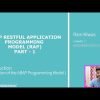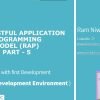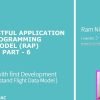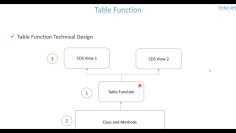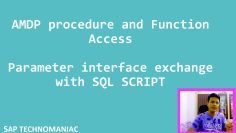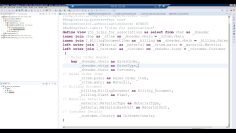In this tutorial, the presenter continues the exploration of the ABAP RESTful Application Programming (RAP) model, focusing on the business service provisioning and consumption. The session provides insights into the structure and behavior of business services, their interactions, and the underlying mechanisms that drive their functionality.
Key topics covered in the session:
- RAP Architecture Overview: The presenter recaps the RAP architecture, emphasizing the tasks involved in creating a RAP application, including data modeling, behavior, and business service provisioning.
- Business Object Projection: The concept of projecting base business objects into specific service views is discussed. This allows for the creation of service-specific views, such as customer, vendor, and supplier, based on a common base object like a business partner.
- Service Definition: This step involves defining the scope of what will be exposed as part of the service. It determines which CDS entities from the base or projected views will be part of the service.
- Service Binding: Here, the specific protocol for the service is defined, be it OData V2, V4, or others. This binding determines how the service will be consumed, either as a UI service or a web API.
- Consumption of Services: The presenter explains the difference between consuming a service as a UI service (for SAP Fiori applications) and as a web API. UI services provide metadata for UI rendering, while web APIs offer a public interface for data access.
- Practical Demonstration: Throughout the video, the presenter showcases various steps in the system, highlighting the creation and management of business service definitions, bindings, and consumption.




